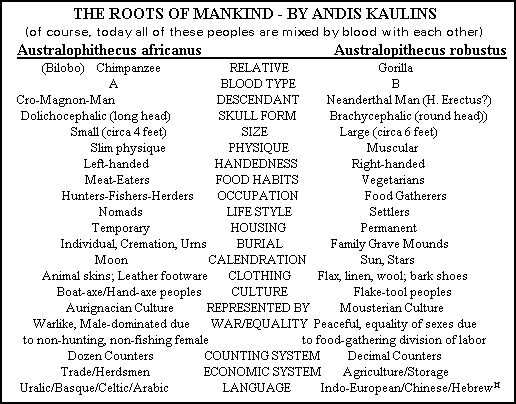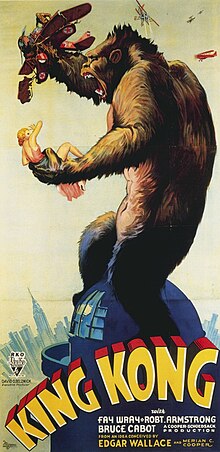 |
| Drawing of French explorer Paul du Chaillu at close quarters with a gorilla 1856 |
If we are lucky we will have a short trek into the forest from our camp, but if they have moved a great distance overnight we will be in for an 8 hour trek through ‘the impenetrable forest’ – I’m gathering it’s called that for a reason! Each trek is not on lovely, premade tracks but forged through the forest with machetes as spiky thorns tear thru clothing. Tucking trousers into socks helps prevent ant swarms from scurrying up your legs to bite you and solid hiking boots or gumboots beat the torrential downpours that create mud deep enough to suck your shoes off.
These are the Gorilla beringei gorillas Dian Fossey studied for 18 years from 1966-85, having originally been sent out there by Louis Leakey and National Geographic. (If you’ve seen the film ‘Gorillas in the Mist’ you’ll know who I’m talking about). Along with JaneGoodall and Birutė Galdikas, she was part of Leakey'sAngels, a group of three prominent researchers on primates (Fossey on gorillas; Goodall on chimpanzees; and Galdikas on orangutans) sent by anthropologist Louis Leakey to study great apes in their natural environments.
.JPG) |
| Louis Leakey, Jane Goodall, Dian Fossey & Birute Galdikas |
One of things that is so adorable about these gentle creatures is that the Silverbacks, the mature males, are very kind hearted and will even care for orphaned offspring on their own.
A gorilla family is categorised in this way: Infant – 0 to 3 years; Juvenile 3 to 5 years; Sub-adult 5 to about 9 years; Adult female – About 9+ years depending on when she starts her menses. Blackback 9 to12 years. Silverback 12+ years, depending on when the male develops a spray of silver on his back marking him as mature enough to head a family.
Females usually conceive at around 8 to 9 years with their first baby being born before age 10. It is remarkable how similar they are to us. The menstrual cycle is 28 days and pregnancy lasts 8 and-a-half months. Infants are weaned at about 2 years, but will ‘comfort suckle’ as long as their mother lets them, or until she gives birth again - usually after around 3 to 4 years.
In fact, when I wrote about the bonobos, I said that they were the only other species to have face-to-face sex, however recently, gorillas have been observed engaging in face-to-face sex.
Every gorilla has a unique fingerprint just like humans as well as a unique nose print. Gorillas are considered to be one of the most intelligent animals in the world. They are able to process information and to think independently. Recently a female gorilla in the Nouabalé-Ndoki National Park was recorded using a stick as if to gauge the depth of water whilst crossing a swamp. They share with us a full range of emotions: love, hate, fear, grief, joy, greed, generosity, pride, shame, empathy, and jealousy. They laugh when they are tickled and cry (with sound, not tears) when they are sad or hurt. They have also been known to show cultural differences in different areas, particularly in different methods of food preparation.
One thing I wanted to know was do gorillas see colour as we do? The answer is yes! Along with the other ‘Old world species’ chimpanzees and orang-utans, gorillas have trichromatic (three-colour) vision like us. They even show individual colour preferences! New World monkeys vary. The howler monkey, for example, is trichromatic. The owl monkey is monochromatic, seeing only in black and white. Among tamarins and spider monkeys, all males are dichromats—they can't perceive reds or greens. But females split 60-40 between three- and two-color vision.
Andrew Smith, a primatologist at the University of Stirling in Scotland, has been working for nearly a decade with collegues in the Peruvian Amazon to study how different types of sight affected the foraging behavior of New World monkeys called tamarins.
"You can have six individuals from the same species, even the same family, who see the world in six different ways," Smith said.
Like the one in 12 men who are colour blind, many New World monkeys have trouble discriminating between red and green, which can hamper the animals' ability to tell ripe fruit from raw. Orange for example, is a hard colour to detect without red-green perception.
Some forms of dichromacy mean less sensitivity to light, making the world appear dimmer. So what’s the evolutionary advantage of this? Well, it would appear that if you’re not as distracted by colour (leave the gathering to the more colour astute women) you might be better at seeing shapes and forms – essential when hunting prey. New World monkeys consume large quantities of prey—katydids, frogs, and lizards.
I was fascinated to learn that like me and my offspring, all gorillas share the same blood type (B). Chimpanzees on the other all have blood type (A). Some evolutionary scientists believe the gorilla to be the ancestor of Neanderthal man. Interestingly, as I was researching evolutionary genetics I stumbled across a study by Boren et al. (1993), in which a bacterium casing gastric disorders was linked to blood type (O). The researchers found there to be less receptors for the bacterium in blood types A and B, thus people with blood type O were more susceptible. If you suffer from tummy upsets or ulcers are you blood type (O)?
Here is an interesting evolutionary chart comparing chimpanzee with gorilla evolutionary descent. Can you relate more to one than the other?





